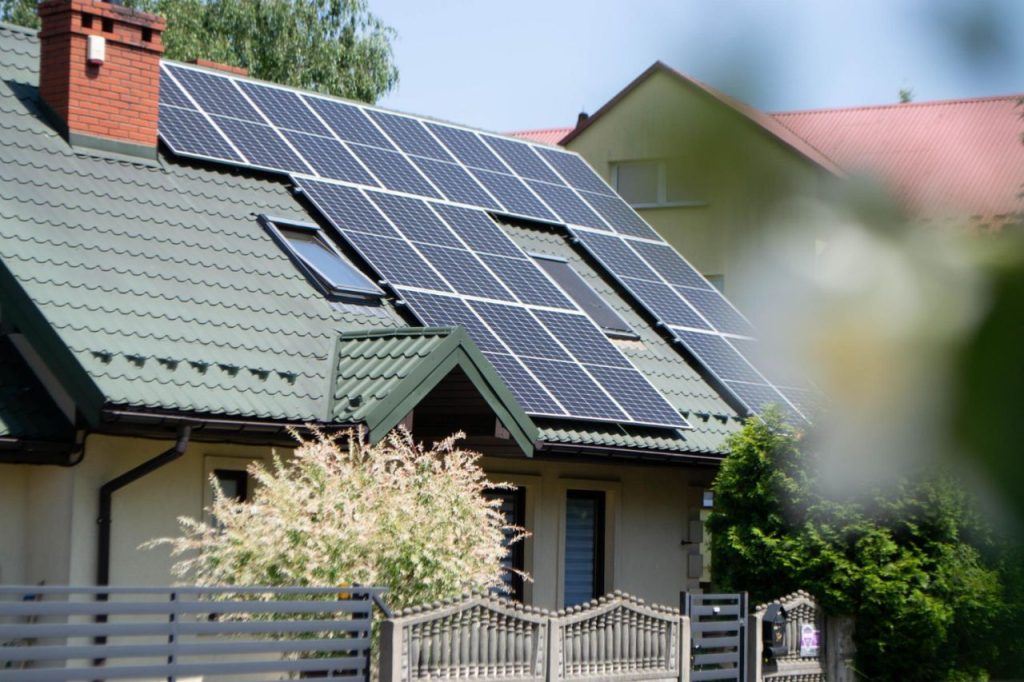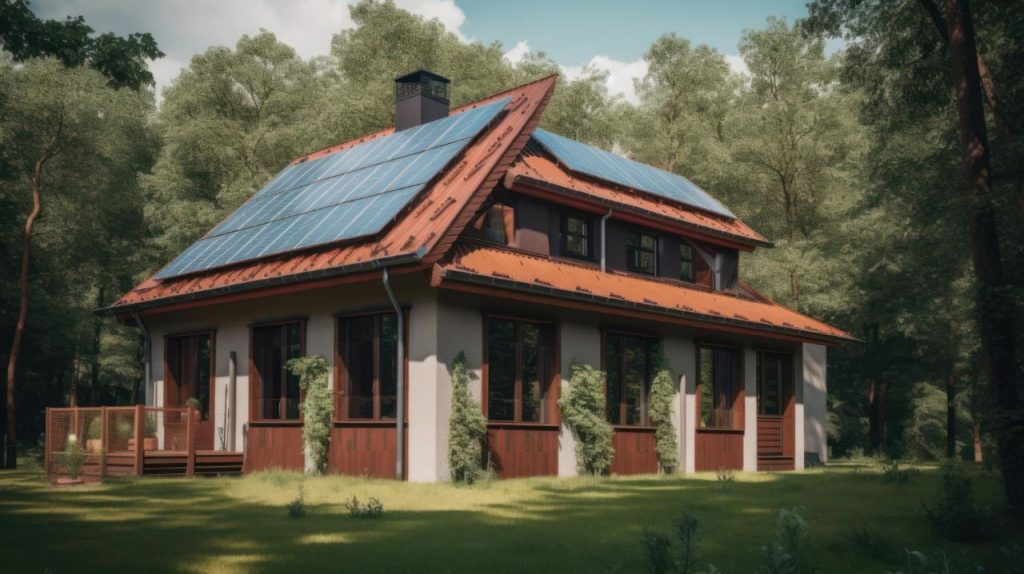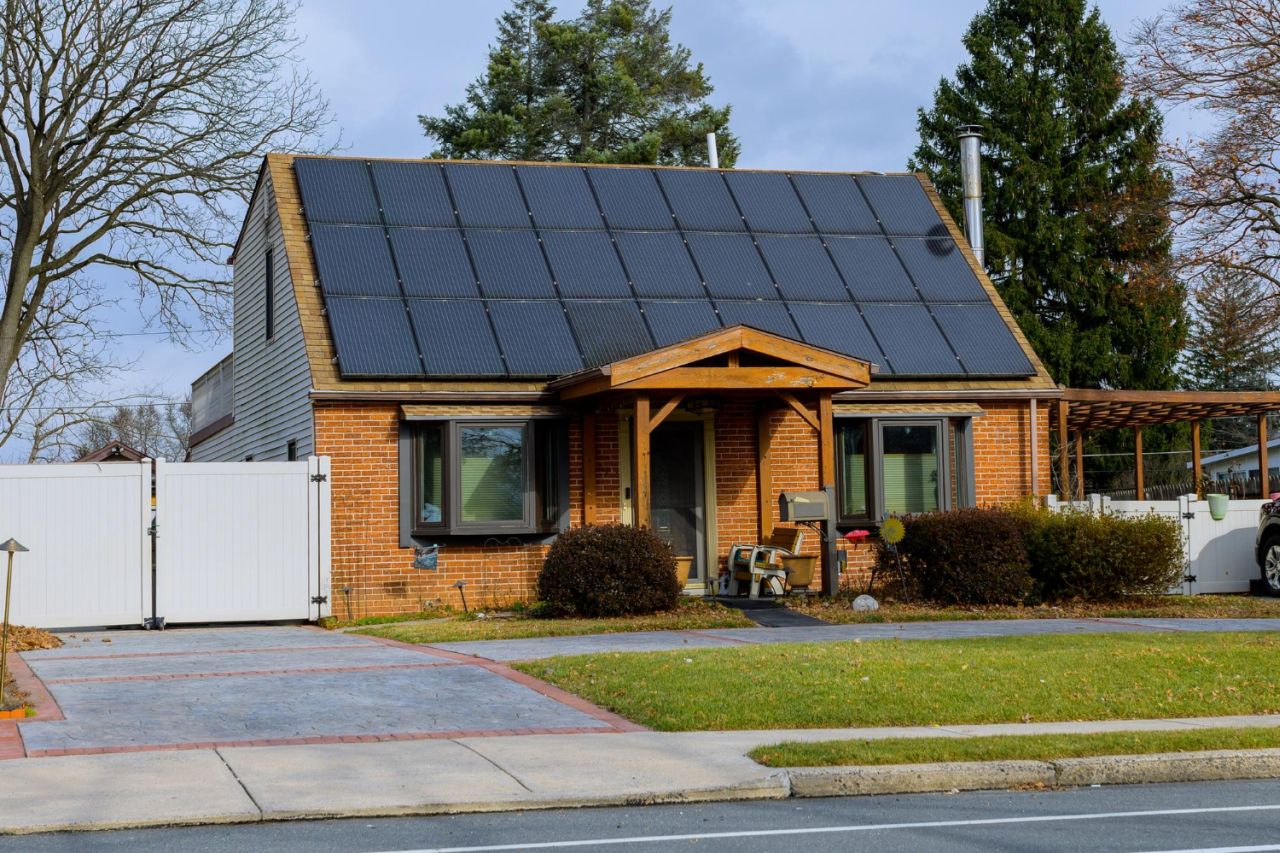Welcome to our comprehensive solar panel guide for Australians interested in sustainable energy. Solar energy is practical and becoming more popular among individuals and companies across the continent due to ample sunshine.
This tutorial explains solar panels, their function, and why they’re a good investment for you.
What Are Solar Panels?
Solar or PV panels directly convert sunlight into energy. Each panel contains silicon solar cells, which are essential to conversion. These cells use the photovoltaic effect, discovered in the 19th century but only widely used in recent decades.
Photons hitting a solar cell and being absorbed cause the photovoltaic effect. Photon energy frees silicon electrons from atomic bonds. When electrons move freely, they produce electricity.
To catch this current, solar panels are wired to channel power for practical use.
Standard solar panels include numerous layers, such as glass and insulation, protecting silicon cells and boosting efficiency and longevity.
Our multilayer architecture protects cells from external variables and manages heat from prolonged solar exposure.
Solar panels on rooftops or other sunny locations gather solar energy throughout the day. An inverter converts this energy from DC to AC, the electricity most homes and businesses use.
Solar panels are a clean, renewable energy source that can cut power costs, reduce fossil fuel use, and help the environment. Their popularity in sunny Australia shows their feasibility and universal understanding of their advantages.
Types of Solar Panels
1. Monocrystalline Solar Panels
Due to their efficiency and elegant form, monocrystalline solar panels are the premium solar technology option. A single, continuous crystal structure was produced using the Czochralski technique.
A single silicon crystal seed is removed from liquid silicon and cooled into a solid crystal.
Thin wafers of silicon are used to build solar cells. The constant dark hue and rounded edges distinguish these panels.
Pure silicon enables greater electricity flow and reduced cell resistance, boosting efficiency. These are especially efficient at warmer temperatures, which are common in Australia.
2. Polycrystalline Solar Panels
Silicon crystals melted together form polycrystalline solar panels. These panels lack a crystal seed, unlike monocrystalline ones. Molten silicon is poured into a cast and cooled to form numerous grains.
This process creates a blue crystal patchwork design.
Polycrystalline panels are less efficient than monocrystalline because their many crystals might produce electron flow barriers. However, they are cheaper, making them preferred for residential solar setups with enough space.
3. Thin-Film Solar Panels
Thin-film solar panels differ from silicon cell technology. They are manufactured by layering photovoltaic layers on a substrate. CdTe, a-Si, and CIGS are the most prevalent materials. Each material has distinct properties that impact product efficiency and use.
Thin-film panels are less efficient than crystalline silicon panels but perform well in low light, making them useful for places without continuous sunshine.
Their biggest benefit is their flexibility: they can be made in rolls and are lightweight, so they may be used on surfaces unsuitable for panels. Thin-film solar energy research is intriguing due to its adaptability.
Each form of solar panel has pros and downsides, making it suited for diverse energy demands, budgets, and installation locations. Australia’s diversified environment has solar solutions for practically every situation.
How Solar Panels Work
The photovoltaic effect turns sunlight into electricity in solar panels. Photons from sunlight hit your roof or other solar panels to start this process. Each panel has many semiconductive silicon solar cells.
Photons hitting silicon cells convert energy to electrons, negatively charged atom particles. This energy transfer knocks electrons loose, allowing them to flow freely.
However, solar cells are crafted with a built-in electric field that causes these free electrons to move in a specific direction. This directional flow of electrons forms a current, and by placing metal contacts on the top and bottom of the solar cells, this current can be drawn off for external use.
Once generated, the direct current (DC) electricity is not yet ready for typical household use. Most homes and businesses use alternating current (AC) because it is more efficient for transporting electricity over long distances.
The DC power from the solar panels is channelled to an inverter, usually installed with the array. The inverter converts DC to AC power for grid compatibility and daily use.
Solar panels’ efficiency in converting sunlight into power relies on their orientation, tilt, shadow, and sunshine. Solar technology works well in Australia because of its strong solar irradiation.
Solar panels are prevalent in urban and rural Australia to create clean, renewable electricity from ample sunlight.
Solar panels become more efficient as technology progresses, making them a potent answer for reducing fossil fuel use and achieving sustainability. Thus, knowing solar panels’ foundations is the first step to realising their potential in our energy transition.
Benefits of Solar Panels in Australia

1. Reduce Electricity Bills
Installing solar panels in Australia significantly lowers power expenditures.
Solar panels generate free power for system owners, making it a cost-effective alternative to high electricity costs in many areas. Homeowners and businesses may use daylight-generated power to minimise grid use.
Any excess electricity can be put back into the grid. Most Australian jurisdictions provide feed-in tariffs or other incentives for extra power, lowering monthly electricity prices.
2. Increase Property Value
Solar panels reduce energy expenses and boost home value. Studies demonstrate that solar-powered homes sell for more.
A solar-powered, energy-efficient home is becoming more appealing to buyers. This is tempting in Australia, where environmental awareness is rising and homeowners want long-term savings.
3. Eco-friendly
Solar power creates electricity without polluting or releasing greenhouse gases, lowering your carbon footprint. Australia’s national strategies emphasise climate change mitigation.
Solar energy can help households and companies achieve these environmental goals. This is vital to protecting Australia’s distinctive ecosystems and fighting climate change globally.
4. Energy Independence
Australians can achieve energy independence by generating their electricity. This is especially useful in a nation with variable energy costs and supply outages, especially in rural locations.
Solar power can help homes and businesses reduce their dependence on electricity networks. This autonomy empowers and protects against growing energy costs and shortages.
5. Supporting Local Economies
Australia’s solar sector growth creates jobs and boosts the economy. Solar has become a major local industry, From manufacturing and sales to installation and maintenance.
Solar panels boost growth and provide technology, trade, and engineering jobs.
These benefits show why Australians should install solar panels. Solar energy is a good renewable energy investment because of its economic savings, environmental advantages, and local economic impact.
Cost and Installation
Technology and market competition have made solar panel installation in Australia cheaper. The upfront investment may seem high, but energy bill reductions make it worthwhile.
Costs vary depending on system size, panel type, and property demands. A typical house installation costs a few thousand to several thousand dollars, but lower utility expenses generally pay for it.
Government subsidies also reduce solar panel prices. Many federal, state, and municipal programs offer refunds and tax credits to mitigate the initial cost.
The Small-scale Renewable Energy Scheme sells certificates for a refund at purchase. Many municipal governments incentivise households and companies to transition to renewable energy.
Installing requires multiple stages, starting with picking a provider. A qualified and skilled installation is needed to configure the system for optimal performance.
Your house or company is assessed to determine system size and panel location. Roof space, direction, and surrounding shading are considered in this assessment.
The next stage after system design is acquiring permissions and approvals. Local governments typically need certain paperwork and inspections to assure safety and zoning compliance.
Once licences are obtained, installation might take one to three days, depending on system complexity and size.

Connection to the electricity grid requires arrangement with your local utility company after installation. Grid feed-ins can provide credits for surplus electricity delivered to the grid through this connection.
Finally, most systems include real-time monitoring software that lets homeowners track energy output and consumption for better energy management.
While solar power requires a large initial investment and coordination, its long-term financial and environmental advantages make it a good alternative for many Australians. As solar technology improves and becomes cheaper, it may become increasingly important in Australia’s energy mix.
Finally, Australian solar panels provide a road to sustainability and energy independence. Solar panels reduce energy expenses and help the environment.
As we have seen, monocrystalline, polycrystalline, and thin-film solar panels each offer their own merits, enabling people and companies to pick the finest ones for their requirements and surroundings.
Solar panel technology is intriguing and effective. They transform Australia’s plentiful sunlight into energy.
This cuts fossil fuel consumption and greenhouse gas emissions, helping battle climate change. Solar panels’ financial benefits, from lower power bills to higher property prices, make them a smart investment for the financially astute.
Due to improvements, greater market demand, and government subsidies and feed-in tariffs, solar energy is cheaper than ever. Certified specialists install systems safely and effectively, optimising advantages.
Solar energy is a collective option for a sustainable future, not simply a personal or financial one. Australians seeking to improve their finances and the environment should consider solar panels. Australia becomes greener and more sustainable for future generations as more houses and businesses switch to renewable energy. This comprehensive solar panel guide is the start of a greener future.
